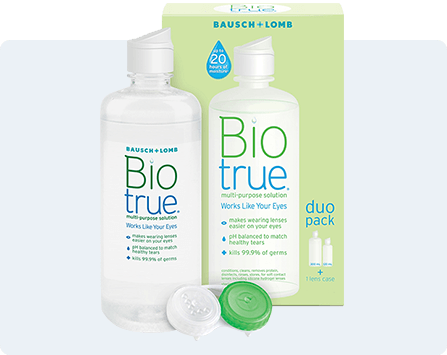Eye Infections and Irritations
Contact Lens Discomfort

What Causes Contact Lens Discomfort?
Contact lens discomfort can occur for a variety of reasons. In order for contact lenses to work the way they’re supposed to, it’s important to care for them properly, following the maintenance and replacement schedule. These guidelines help to keep your eyes healthy and comfortable in contact lenses. If they’re not followed, problems with vision, comfort and other safety issues can occur.
You should be aware that the following problems may occur:
- Eyes stinging, burning, itching (irritation), or other eye pain
- Comfort is less than when lens was first placed on eye
- Abnormal feeling of something in the eye (foreign body, scratched area)
- Excessive watering (tearing) of the eyes
- Unusual eye secretions
- Redness of the eyes
- Reduced sharpness of vision (poor visual acuity)
- Blurred vision, rainbows, or halos around objects
- Sensitivity to light (photophobia)
- Dry eyes
If you notice any of the above symptoms remove your lenses immediately. Contact your eye care practitioner or pharmacist for further advice.
If the discomfort or problem stops, then look closely at the lens. If the lens is damaged in any way, do not put the lens back on your eye. Place the lens in the storage case and contact your eye care practitioner. If the lens has dirt, an eyelash, or other foreign body on it, or the problem stops and the lens appears undamaged, you should thoroughly clean, rinse, and disinfect the lenses; then reinsert them. After reinsertion, if the problem continues, you should immediately remove the lenses and consult your eye care practitioner.
When any of the above problems occur, you should keep the lens off your eye and seek immediate professional identification of the problem and prompt treatment to avoid serious eye damage.
If you are wearing 2-weekly or monthly lenses, be sure to follow the manufacturer’s recommendations, cleaning your lenses with each use, and replacing them on the schedule your eye care practitioner recommended for you. This is the best way to ensure your lenses stay comfortable and your eyes stay healthy.
Poor Fit
Your eye’s size and shape are unique to you, and your contact lenses should be too. Your eye care practitioner performs a variety of measurements to make sure the fit of your contact lens is well-fitting, but sometimes, it may be a little off as eyes can change shape slightly over time.
Symptoms – Feeling a foreign object in the eye, slight pain or irritation, redness, fluctuations in vision.
Treatment – Tell your eye care practitioner – they will re-examine your eyes and lens selection to give you a better fit. This is important, as improperly fitted lenses may cause surface abrasions to the cornea.
Contact Lens Associated Dry Eyes
People with dry eyes may not produce enough tears to keep eyes moist and lubricated. This creates discomfort when they wear contact lenses. Dry eyes may be inherent (associated with a number of medical conditions), or acquired (linked with risk factors such as smoking, computer use, caffeine, certain medications, and more).
Symptoms – Tired eyes, dry eyes, and discomfort.
Treatments – Your eye care practitioner may recommend a lubricating/rewetting solution for you to use. It is important to find contact lens lubricating/rewetting drops or contact lens solutions that are compatible with your contact lenses.
Environmental Allergens
Your eyes may become irritated when there are large amounts of environmental allergens such as pollen, dust or dander. These allergens can stick to the surface of your eye or lenses, causing irritation for the wearer.
Symptoms – Redness, irritation, dryness.
Treatments – Frequent cleaning is crucial to remove any buildup that may occur on lenses. If problems persist, switching to a daily disposable modality can provide a fresh pair of lenses every day. If it’s seasonal allergies that are affecting your eyes, be sure to take advice from an eye care practitioner as there are a number of eye drops available that treat/relieve the symptoms but not all can be used with contact lenses-some drops you will have to wait a specific time before putting your contact lenses in.
Underlying Conditions
Irritation in your eyes may not come from your contact lenses at all. If your eyes become red, swollen, or if you experience discharge, you should remove your contact lenses straight away and contact an eye care practitioner immediately. Your symptoms may be a result of infection, or underlying disease and should be diagnosed and treated as soon as possible. You should not wear contact lenses if you have an eye infection or while using certain topical eye medications.
Always consult your eye care practitioner for further advice.



